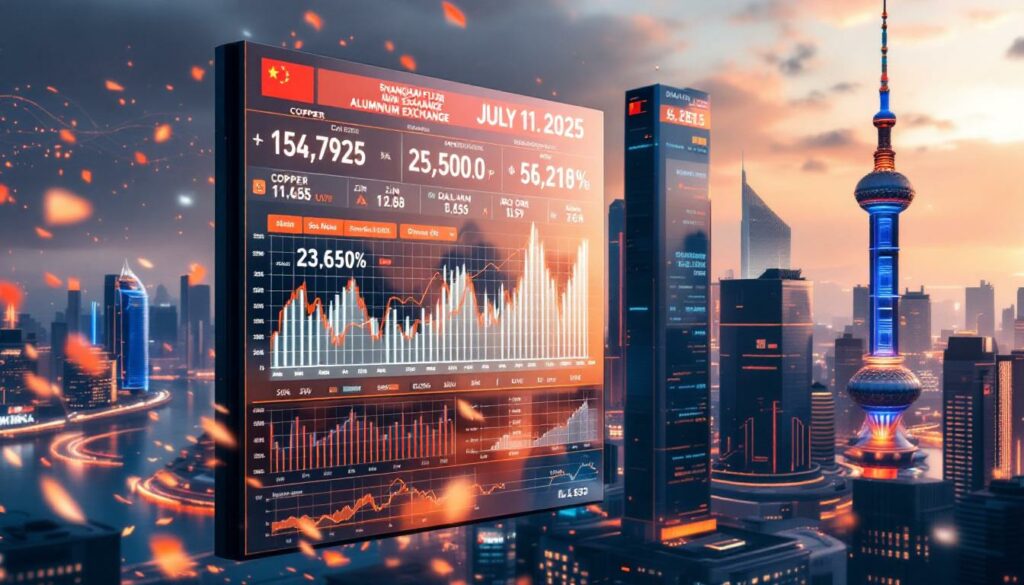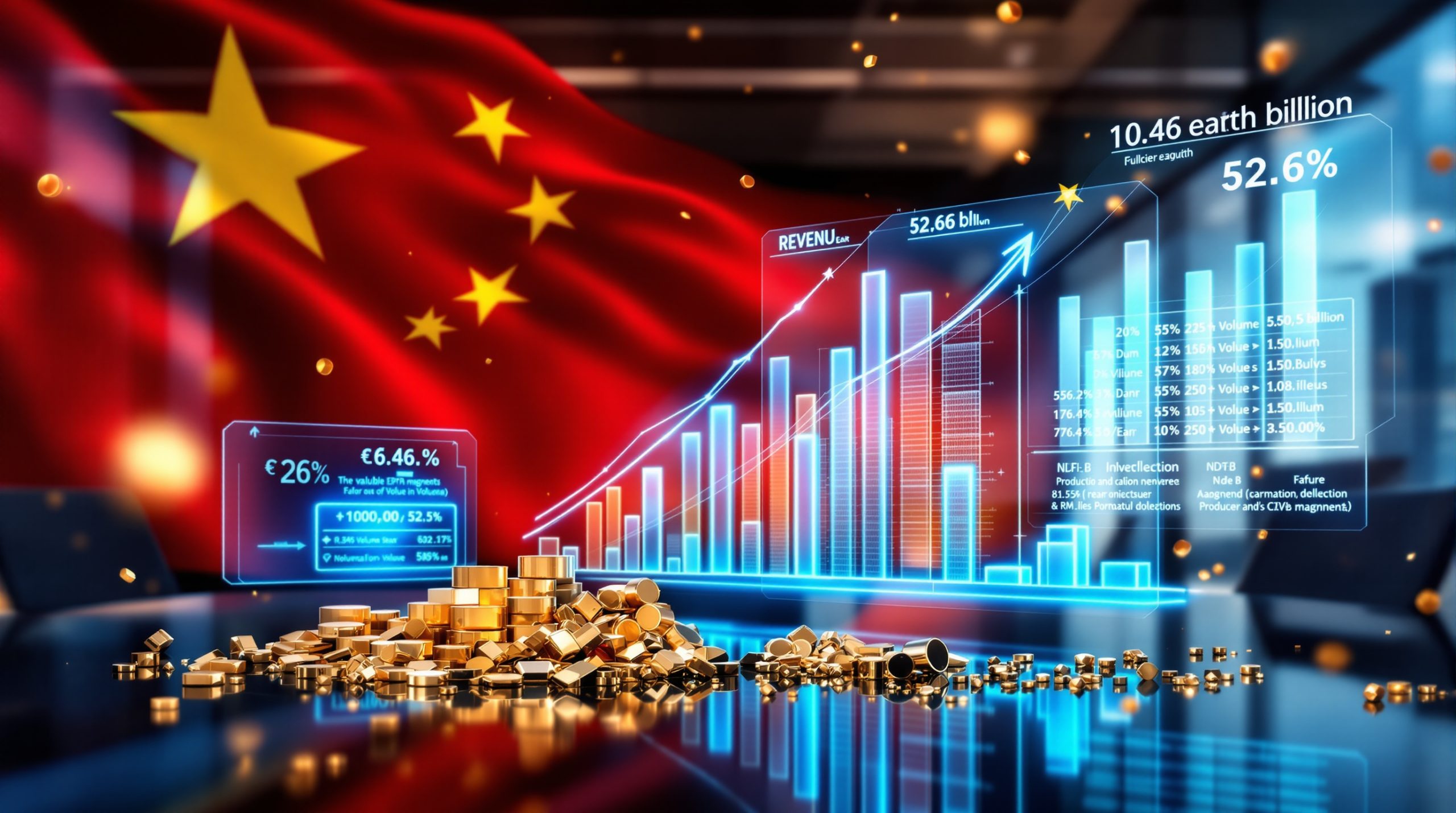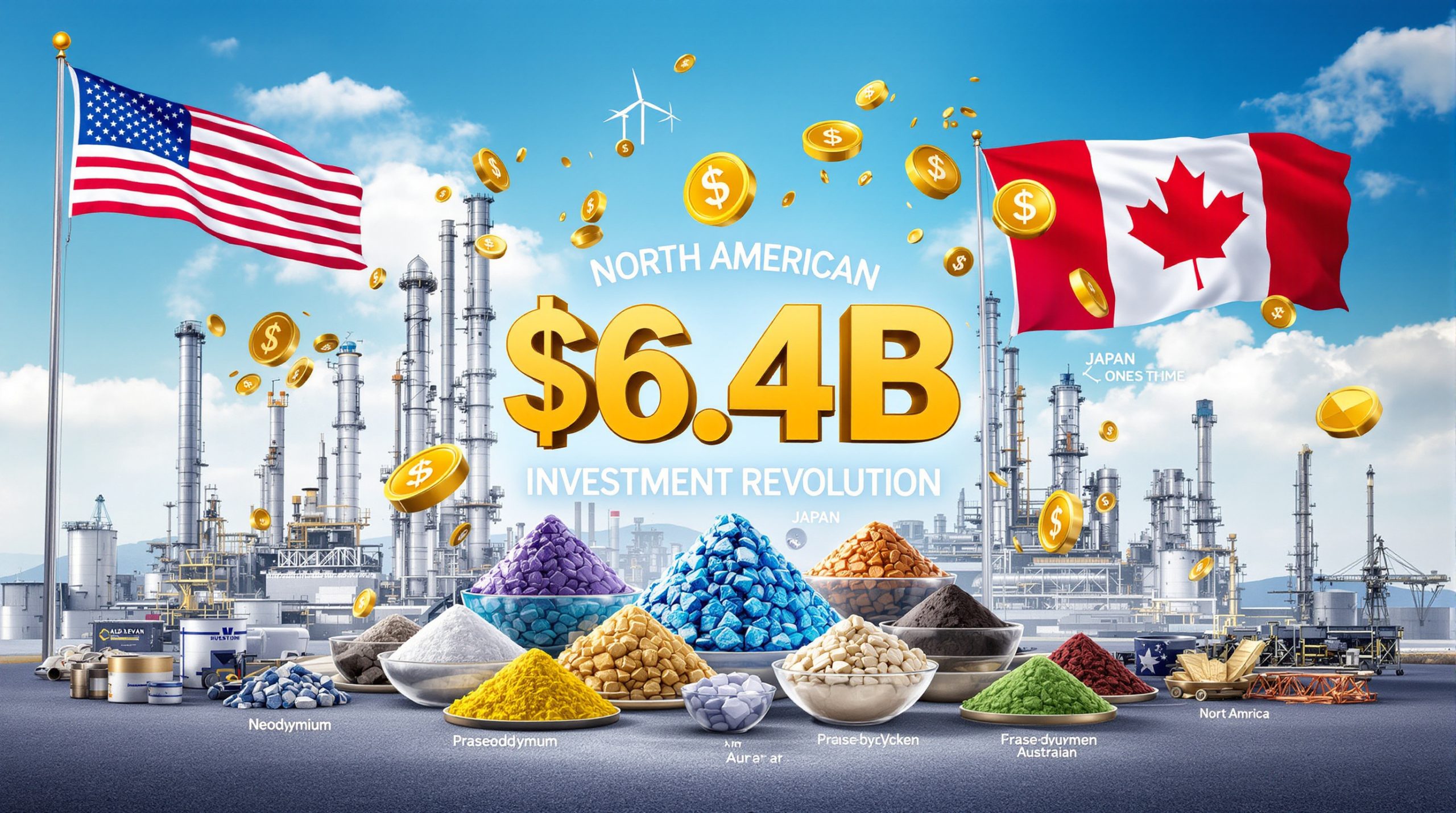What Are the SHFE and DCE Markets?
In the intricate tapestry of global commodity trading, China's futures exchanges stand as pivotal institutions shaping international metal prices. The Shanghai Futures Exchange (SHFE) and Dalian Commodity Exchange (DCE) represent two of Asia's most influential trading venues, collectively handling over 1.4 billion contracts annually with a combined trading value exceeding ¥240 trillion ($37 trillion).
Understanding Chinese Metal Exchanges
The Shanghai Futures Exchange, established in December 1999, has evolved into Asia's premier marketplace for nonferrous metals trading. SHFE dominates approximately 60% of global base metals futures trading by volume, outpacing even the London Metal Exchange in certain contracts. Its copper benchmark has become the reference price for physical transactions throughout the Asia-Pacific region.
The Dalian Commodity Exchange, founded earlier in 1993, specializes in ferrous metals and agricultural commodities. DCE's iron ore forecast contract stands as the world's largest iron ore futures market, with over 450 million contracts traded annually. This exchange plays a crucial role in price discovery for steel-making raw materials across the global supply chain.
"SHFE's copper contract has emerged as Asia's definitive benchmark for pricing, directly influencing LME and COMEX arbitrage activities throughout the trading day," notes Dr. Hao Chen of the China Futures Association.
Both exchanges operate under China's stringent regulatory framework governed by the China Securities Regulatory Commission (CSRC). Unlike some Western exchanges, SHFE mandates physical delivery for base metals contracts, creating a direct link between futures prices and physical market fundamentals. This delivery mechanism helps prevent excessive speculation while ensuring price convergence between futures and spot markets.
How These Markets Impact Global Metal Prices
The influence of Chinese exchanges extends far beyond domestic borders. As China consumes approximately 50% of global base metals production, price movements on SHFE and DCE create ripple effects across international markets. When Chinese futures move significantly, traders at the LME and COMEX rapidly adjust positions to capitalize on arbitrage opportunities.
Trading volumes tell a compelling story of China's growing dominance. In 2022, SHFE's copper contract exceeded 32 million lots, representing 160 million metric tons—nearly eight times annual global copper production. This overwhelming liquidity makes SHFE the primary price discovery mechanism during Asian trading hours.
Price movements between exchanges exhibit strong correlations but with important timing differences:
| Exchange Correlation | Time Lag | Correlation Coefficient |
|---|---|---|
| SHFE → LME Copper | 2-4 hours | 0.83 |
| DCE → SGX Iron Ore | 1-2 hours | 0.91 |
| SHFE → COMEX Aluminum | 3-5 hours | 0.76 |
This relationship creates a "follow-the-sun" trading pattern where price action begins in Asia, transfers to Europe, and concludes in North America before returning to Asian markets the following day.
A distinctive feature of Chinese exchanges is their night trading sessions (21:00-01:00 CST), which overlap with European market hours. These extended trading windows enhance global price discovery and allow Chinese traders to respond to international developments in real-time.
How Did Metal Futures Perform on July 11, 2025?
The July 11, 2025 trading session witnessed significant volatility across both ferrous and nonferrous metals contracts on China's leading futures exchanges. Trading volumes exceeded daily averages by approximately 18%, indicating heightened market interest amid evolving macroeconomic conditions.
Base Metals Performance Overview
Copper futures on the SHFE displayed remarkable resilience despite broader market concerns. The most-traded September contract settled at ¥79,450 per metric ton ($12,245), marking a 1.8% increase from the previous session. This upward movement came amid declining warehouse stocks, with SHFE-monitored copper inventories reaching their lowest levels since February 2025.
Aluminum contracts presented a more complex picture, with price action reflecting ongoing tensions between production cuts and demand concerns. The primary September contract closed at ¥19,860 per metric ton ($3,060), declining 0.6% after initially trading higher. Trading volumes surged to 223,000 lots, significantly above the 20-day average of 185,000 lots.
Other base metals showed mixed performance:
- Zinc futures advanced 2.3% to ¥26,740 ($4,120) per metric ton
- Lead contracts declined 0.8% to ¥17,465 ($2,690) per metric ton
- Nickel futures remained relatively stable with a marginal 0.2% gain
- Tin contracts posted the day's strongest performance with a 3.1% increase
Compared to the previous trading session, base metals demonstrated greater directional divergence, suggesting sector-specific fundamentals rather than broad-market sentiment driving price action.
Ferrous Metals Trading Summary
The DCE saw iron ore futures retreat after a four-day rally, with the benchmark September contract settling at ¥842 ($129.80) per metric ton, down 1.2% as traders reassessed near-term iron ore demand insights. Trading volumes reached 892,000 lots, indicating strong market participation despite the price decline.
Steel rebar futures on SHFE moved in sympathy with iron ore, closing down 0.9% at ¥3,935 ($606) per metric ton. Hot-rolled coil contracts showed similar weakness, declining 1.1% to ¥4,120 ($635) per metric ton. Both contracts experienced relatively light trading volumes compared to recent sessions.
The coking coal and coke markets painted a different picture:
- Coking coal futures gained 1.6% to ¥2,175 ($335) per metric ton
- Coke contracts advanced 1.3% to ¥2,865 ($441) per metric ton
This divergence between steel-making inputs and finished steel products highlights the complex interplay of factors affecting different segments of the ferrous supply chain.
Market observers noted unusual price correlations between ferrous products, with the typical steel-iron ore price relationship temporarily decoupling during the session.
What Factors Drove Market Movement on July 11?
The pronounced price movements across Chinese metal futures on July 11, 2025, stemmed from a confluence of domestic and international factors, creating a complex trading environment that rewarded careful analysis of cross-market dynamics.
Macroeconomic Influences
China's latest economic indicators cast a significant shadow over metal trading. The National Bureau of Statistics had released the June Manufacturing PMI the previous day, showing a reading of 49.8—falling below the expansion threshold of 50 for the first time in three months. This unexpected contraction triggered initial selling pressure across industrial metals.
"Chinese metal futures react acutely to PMI releases; a 0.5% drop in PMI typically correlates with a 2-3% copper price prediction decline," explained Dr. Wei Zhang of Macquarie Capital. "Today's divergent performance suggests traders are looking beyond headline numbers to sector-specific indicators."
Currency fluctuations played an equally important role in the day's trading. The Chinese yuan weakened to 6.49 against the US dollar, approaching a four-month low. This currency movement provided a countervailing force for metal prices, as a weaker yuan makes dollar-denominated imports more expensive while potentially boosting export competitiveness.
The broader interest rate environment also factored into trader calculations. The People's Bank of China had maintained its medium-term lending facility rate at 2.5% during its most recent policy meeting, but market participants increasingly anticipated potential easing measures in response to slowing economic momentum.
Supply-Side Dynamics
Production disruptions across several key mining regions contributed significantly to price movements, particularly in the nonferrous sector. Weather-related disruptions in South America's copper belt reduced concentrate availability, with Chile's largest producer reporting a 15% decline in June output compared to the previous year.
For aluminum, environmental inspections in Yunnan province—representing about 12% of China's aluminum production capacity—resulted in temporary suspensions at several smelters. These supply constraints helped offset bearish demand signals, explaining aluminum's relatively modest decline despite weak manufacturing data.
Inventory levels across major Chinese warehouses showed notable drawdowns:
| Metal | Inventory Change (week-on-week) | Current Level vs. 5-Year Average |
|---|---|---|
| Copper | -4.2% | -32% |
| Aluminum | -1.8% | -15% |
| Zinc | -3.5% | -28% |
| Iron Ore | +2.1% | +8% |
These inventory trends, particularly the accelerating drawdowns in base metals, provided fundamental support for prices despite macroeconomic headwinds.
Recent policy adjustments further complicated the trading landscape. China's State Administration for Market Regulation had announced enhanced oversight measures for commodity futures trading the previous week, specifically targeting excessive speculation in essential industrial materials. This regulatory stance heightened trader caution, particularly in contracts showing significant premiums to international prices.
How Are Different Metal Sectors Performing?
The performance divergence across metal sectors highlights the increasingly segmented nature of China's industrial economy, with supply-chain bottlenecks and sector-specific demand creating unique trading environments for each metal category.
Base Metals Market Analysis
Copper continues to outperform broader industrial metal indices, supported by fundamentals that remain exceptionally tight. The global refined copper market has maintained a persistent deficit, with Q1 2025 showing a shortfall of approximately 220,000 metric tons. This supply-demand imbalance has kept SHFE copper trading at a premium to LME prices for 73 consecutive trading days—the longest such streak since 2017.
The electric vehicle sector remains a primary demand driver, with China's EV production growing 22% year-on-year through May 2025. Each electric vehicle requires approximately 83 kg of copper compared to 23 kg in conventional vehicles, creating structural support for prices despite construction sector weakness.
"The copper market is experiencing a fundamental shift in demand patterns," notes industry analyst Min Zhang. "While traditional construction usage has plateaued, electrification trends are creating a steeper demand curve than many market participants anticipated."
Aluminum market fundamentals present a more complex picture. Production costs have surged amid higher electricity prices and carbon reduction targets, with approximately 38% of Chinese smelters now operating near break-even levels. The country's aluminum output fell 2.8% year-on-year in June 2025, marking the fourth consecutive month of declining production.
Nickel continues to experience significant price volatility, driven largely by changing dynamics in battery chemistry. The growing adoption of LFP (lithium iron phosphate) batteries at the expense of nickel-rich formulations has created uncertainty regarding medium-term demand growth. However, stainless steel production—still consuming over 70% of global nickel—showed resilience with a 3.2% year-on-year increase in Q2 2025.
Zinc market dynamics reflect acute concerns about European smelter viability. With energy costs remaining elevated, several major European refiners have reduced output, shifting greater importance to Chinese production. SHFE zinc inventories have declined for 14 consecutive weeks, reaching critically low levels that barely cover 3.5 days of consumption.
Precious and Minor Metals Trends
Gold futures on SHFE have demonstrated remarkable strength amid global economic uncertainties, gaining 12.3% year-to-date. The December contract settled at ¥512.50 per gram ($2,457 per ounce), approaching historical highs as investors seek inflation hedges and safe-haven assets amid ongoing gold price analysis.
Silver has outperformed gold in percentage terms, rising 18.7% year-to-date to ¥6,235 per kilogram ($29.83 per ounce). Industrial applications, particularly in photovoltaic production, have supplemented investment demand. China's solar capacity additions are projected to reach 180 GW in 2025, requiring substantial silver inputs.
The rare earth elements market shows growing pricing power for Chinese producers following industry consolidation. The newly formed China Rare Earth Group now controls approximately 70% of global heavy rare earth production, creating a more disciplined pricing environment. Neodymium prices have increased 35% year-to-date amid strong demand from permanent magnet manufacturers.
Minor metals with technology applications have shown particularly strong performance:
- Cobalt sulfate prices have risen 22% year-to-date despite battery chemistry shifts
- Lithium carbonate prices stabilized in Q2 after declining through late 2024
- Indium prices surged 45% year-to-date driven by semiconductor and display applications
- Gallium prices increased 28% following export restrictions implemented in late 2024
These specialized materials, often thinly traded, continue to experience greater volatility than major industrial metals, presenting both opportunities and risks for specialized traders.
What Technical Indicators Are Signaling for Metal Futures?
Technical analysis provides critical insights for short-term price movements in Chinese metal futures, with recent trading patterns suggesting important inflection points across several key contracts.
Price Pattern Analysis
Copper futures on SHFE have established a well-defined ascending channel since early May, with prices consistently respecting both upper and lower boundaries. The current price action places copper near the channel midpoint, with significant support at ¥77,800 and resistance at ¥80,600. The 50-day moving average has crossed above the 200-day line, forming a "golden cross" pattern that typically signals bullish momentum.
Aluminum contracts present a more concerning technical picture. Prices have formed a descending triangle pattern since late June, often interpreted as a continuation pattern in a downtrend. The critical support level at ¥19,500 has been tested three times in recent sessions—a decisive break below could trigger accelerated selling toward ¥18,800.
Iron ore futures on DCE have developed a complex head-and-shoulders pattern over the past six weeks, with the neckline around ¥830 now under significant pressure. The relative strength index (RSI) reading of 41.2 suggests approaching oversold conditions but remains above extremes that would signal a potential reversal.
Technical indicators across major metals contracts reveal important momentum shifts:
| Contract | RSI (14-day) | MACD Signal | Key Support | Key Resistance |
|---|---|---|---|---|
| Copper | 58.3 | Bullish | ¥77,800 | ¥80,600 |
| Aluminum | 43.6 | Neutral | ¥19,500 | ¥20,300 |
| Zinc | 62.8 | Bullish | ¥25,900 | ¥27,200 |
| Iron Ore | 41.2 | Bearish | ¥830 | ¥865 |
| Rebar | 39.5 | Bearish | ¥3,880 | ¥4,020 |
Volume analysis reveals particularly notable patterns in copper, where rising prices accompanied by expanding volume suggest genuine buying interest rather than a short-covering rally. Conversely, iron ore's recent decline has occurred on above-average volume, typically interpreted as confirmation of the prevailing downtrend.
Trading Strategy Considerations
The term structure of futures curves provides additional strategic insights. Copper contracts display a notable backwardation (spot prices higher than futures), with the front-month trading at a ¥380 premium to six-month contracts. This curve structure typically indicates immediate supply tightness and often correlates with continued price strength.
In contrast, aluminum futures show contango (futures prices higher than spot), with six-month contracts trading at a ¥320 premium to front-month. This pattern suggests adequate near-term supply and potential warehousing incentives, creating opportunities for carry trades among institutional investors.
Calendar spread strategies have gained popularity, particularly in the ferrous complex. The September-January iron ore spread has widened to ¥38, significantly above the typical seasonal pattern. This divergence may present opportunities for spread compression trades as winter production restrictions approach.
"Chinese futures markets often telegraph physical market turning points through changes in curve structure before outright price movements," explains Liu Wei, derivatives strategist at Orient Futures.
For industrial consumers, current market conditions suggest selective hedging approaches. With copper in backwardation, consuming businesses face unfavorable hedging conditions and might consider minimum coverage strategies. Conversely, aluminum's contango structure offers manufacturers advant
Ready to Get Real-Time Alerts on Major Mineral Discoveries?
Stay ahead of the market with Discovery Alert's proprietary Discovery IQ model, which instantly notifies investors of significant ASX mineral discoveries and transforms complex data into actionable insights. Explore why major mineral discoveries can lead to substantial returns by visiting our dedicated discoveries page and begin your 30-day free trial today.




